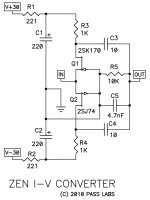Is that your take on the HP 4328A Milliohmeter? It used AC excitation (for a whole lot of good reasons) and measured only the resistive vector.
Verifying over a frequency range is really difficult. I found that at milliOhms the inductance of a short wire can be significant. What you may be seeing is the inductance of the series impedance affecting the reading. i know low inductance milliOhm resistors are not common. In fact they are really hard to make. I believe JNeutron showed one way and that would be a good starting point for checking the test system.
I was given a copy of a manual for a Siemens contact tester that looked for momentary variations on contact resistance. I was interested but the instrument was far too involved to hatch a copy. Essentially it applied an HF signal across the contacts and any variation in the amplitude was recorded.
Once someone asked for a bit of a white paper on the liquid metal cables. I gave them some images from a bluray...of a spade terminated speaker cable set of liquid metal cables..three of the four legs of a 4 foot stereo pair....being used to transfer a 1080i component video signal. 'There's my white paper!' I said. Of course, they invariably had no idea what the hell I was on about.
Due to how the ear hears, the inductance vs milliohm ratio as a interference pattern/differential, is always significant.
We don't hear the micro levels, we hear the peak levels.
On those peak levels, the micro differentials are also extant.
They are swamped by the measurement technique and gear, but critically, not by the ear.
The ear is extraordinarily sensitive to complex harmonics as a set group, in their individual components. All in level and time domain. The combination of the pinna and the inner ear and the brain as a decoding system over time, in a FFT(ish) repetition, as a set, dictates this reality.
This is where the liquid metal cable score big, in gross and micro levels, or in any complex level of excitation. Once the driving force ceases it's impetus (if you will) and thus ceases field state enforcement...we go to local field collapse, as the local system changes orientation according to the local external field which wishes to collapse.
Once they both locally, at light speed, at the Planck length level, align with one another, the dissipation happens locally, at the Planck length levels. Since they are aligned, they inter-relate at QED function levels, and no field collapse can shoot out the ends of the cable as a expected measurable differential. (numbers are all wrong.....)
Thus the liquid metal cable presents serious difficulties in measuring complex in-situ dynamic LCR. As found by Texas Instruments and various telecommunications corporations and laboratories.
The end result is a cable for audio purposes (if designed for that application) which is superior in all ways for said audio use, which is at minimum, a full magnitude beyond any form of lattice structure wire, or non-magnetic methodology such as carbon fiber.
Complex LCR as we know it, is a result of using frozen lattices such as elements which suffer from enforced polarization and thus formed pathways which separate field types from their original QED level homogenized complex spin.... and enforce channeling of them in specific ways. Lead and lag arise from the lattice and it's integration.
In the liquid metal, the lattice rules are grossly relaxed and QED/planck/etc nearly reigns supreme. Thus it is more an MHD and RF electrical analysis with exceedingly high mass, in the QED domain. There is some minimal electron orbital alignment and connectivity, obviously, but it is indeed a true liquid, at the atomic level, similar to that of any water or thermally agitated element in liquid form. At this time in the known human lexicon of possible measurements and theory, it is a thing that remains not wholly defined, but suspected. Likened to the issue of modelling complex arrangements of molecules in interaction, which we can barely do even a few of.
One has to go back to Faraday's original analysis and original Maxwell..pre Heaviside and pre-lorenz analysis. (not lorentz) The simplifications were necessary for motor design and for hand written mathematical analysis and engineering.
This was and is the heart of the the relativity and QED misalignment.
